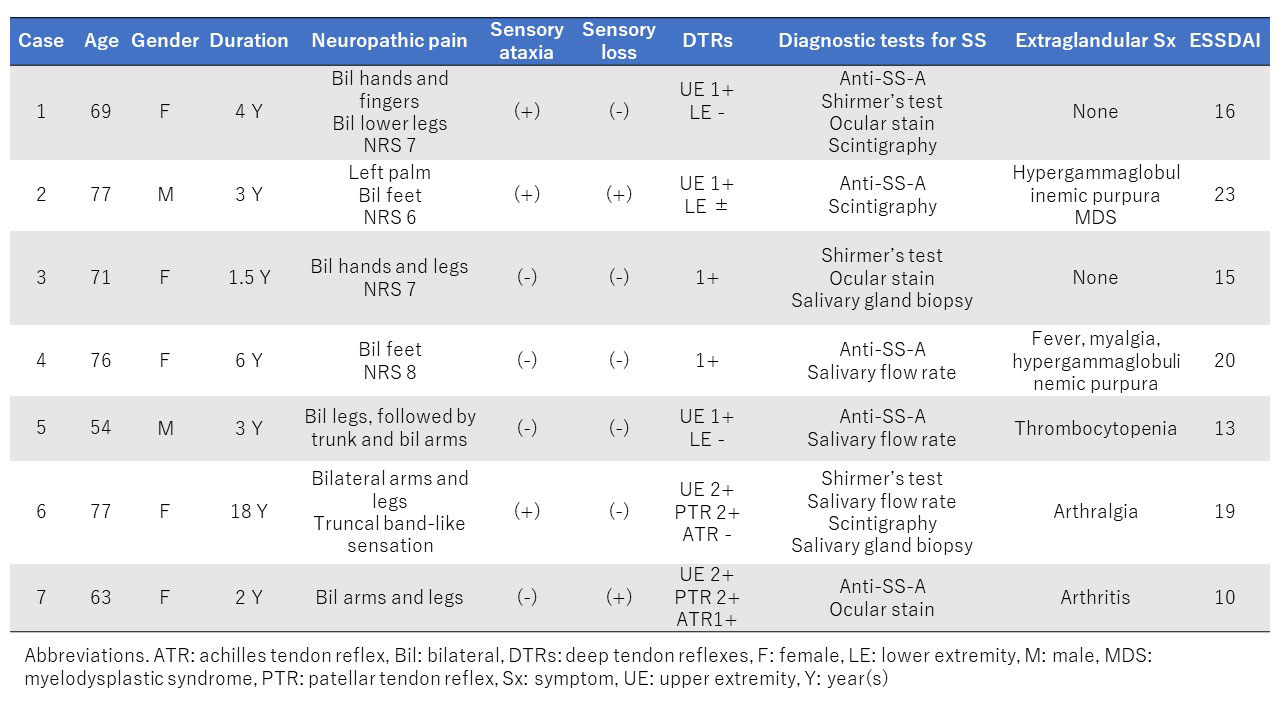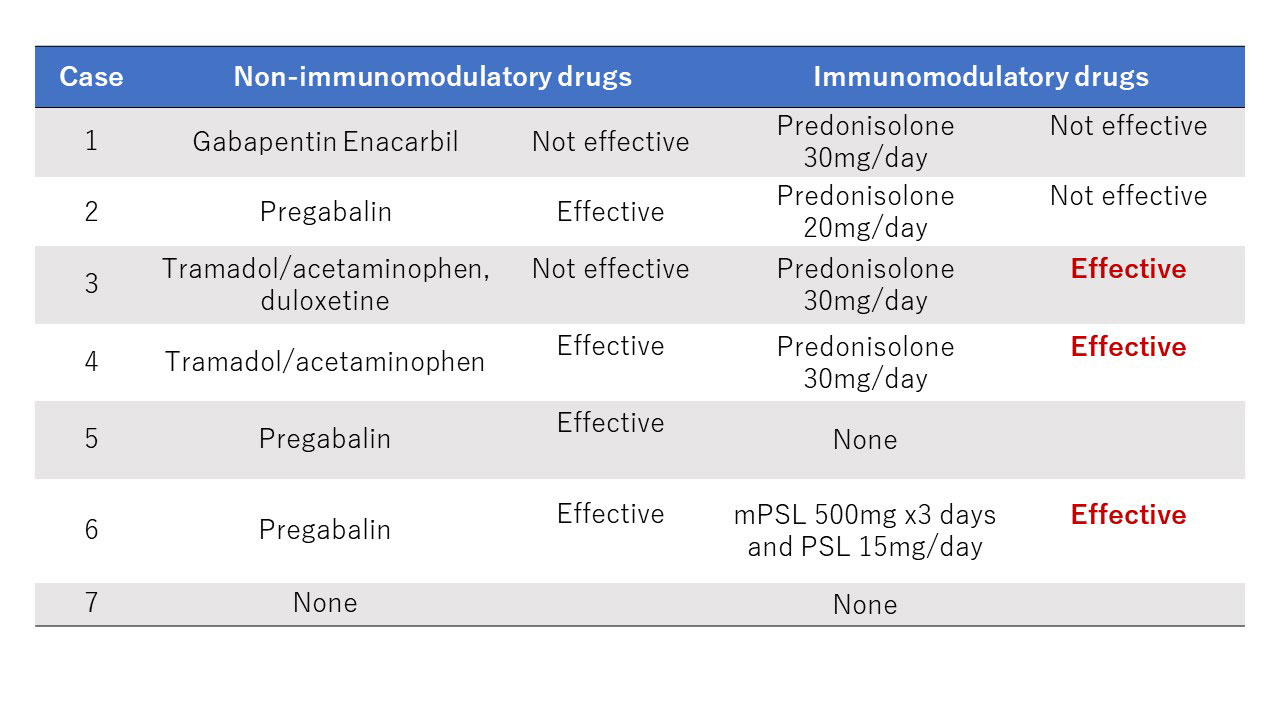Session Information
Session Type: Poster Session (Monday)
Session Time: 9:00AM-11:00AM
Background/Purpose: 6% of primary Sjögren’s syndrome (pSS) patients manifests as various forms of neuropathies including painful sensory neuropathy (PSN), which can be treatable with immunomodulatory drugs such as steroid and immunoglobulin. Our objective is to evaluate usefulness of ultrasound (US) in detecting abnormality of peripheral nerves, and to elucidate the relationship between US findings, histopathological findings and treatment response to immunomodulatory drugs. Recently, nerve US and skin biopsy with analysis of intraepidermal nerve fiber density (IENFD) have increasingly been used for the assessment of various forms of neuropathies. In PSN, skin biopsy is reported to be the most sensitive test for the diagnosis. There is an emerging evidence to suggest association of peripheral nerve swelling on US in patients with PSN. However, there has been no reports assessing the efficacy of peripheral nerve US in pSS associated neuropathy.
Methods: We conducted retrospective chart review from 2017 to 2019. Included patients were pSS fulfilling 2016 ACR-EULAR criteria, and were diagnosed as having neuropathic pain by Neurology specialist. We obtained clinical, serological, and electrophysiological features. On US analysis, we used LOGIQ S8 and LOGIQ ePremium devices. In each of patients, we obtained axial images to measure cross sectional area (CSA) of right median, ulnar, tibial, and sural nerve. Measurement of CSA was preformed by manually tracing the area along the nerve’s hyperechoic rim. Additionally, intraneural vascular flow was assessed by using power doppler technique. Skin biopsy was performed on right lateral thigh and lower leg. IENFD was measured by counting number of nerve fibers entering epidermis. Information about pharmacological treatment was also obtained, and treatment response to immunomodulatory drugs were assessed.
Results: We included 12 patients who underwent US and skin biopsy, and seven of them already completed measurement of IENFD. Majority of these patients were advanced age, and female gender dominated. Duration of neuropathic pain was chronic, ranging from one to five years except one patient with very chronic course over 18 years. Pain was described as burning or tingling sensation, distributed on bilateral arms and legs, although two patients showed truncal involvement. Three patients also showed various degree of sensory ataxia. Only two patients showed decreased pain sensation on neurological exam. Five patients were anti-SSA antibody positive. On nerve US, increased CSA of sural nerve was observed in four patients. And three of them also showed decreased IENFD. Majority of patients showed decreased IENFD of lower leg. Only one patient showed increased intraneural vascular flow. Five patients were treated with moderate dose of predonisolone. Three of them showed significant improvement, as judged from description of treating physician.
Conclusion: Our patients with pSS-associated PSN showed heterogenous clinical, US, and histological findings. Nerve swelling and decreased IENFD were observed in many of them. Steroid therapy was effective in three out of five patients. These changes might reflect inflammatory environment within nerve fibers and resultant axonal loss.
To cite this abstract in AMA style:
Yoshida T, Nodera H, Kumon Y, Mizukami H. Dual Analysis with Nerve Ultrasound and Skin Biopsy in Painful Neuropathy Associated with Sjögren’s Syndrome [abstract]. Arthritis Rheumatol. 2019; 71 (suppl 10). https://acrabstracts.org/abstract/dual-analysis-with-nerve-ultrasound-and-skin-biopsy-in-painful-neuropathy-associated-with-sjogrens-syndrome/. Accessed .« Back to 2019 ACR/ARP Annual Meeting
ACR Meeting Abstracts - https://acrabstracts.org/abstract/dual-analysis-with-nerve-ultrasound-and-skin-biopsy-in-painful-neuropathy-associated-with-sjogrens-syndrome/



